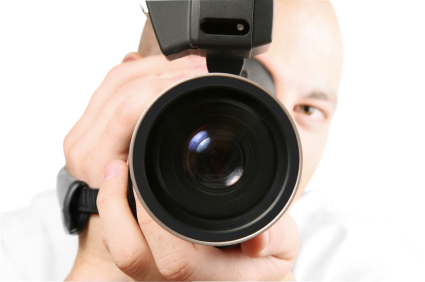 True, there's no substitute for the in-person interview to thoroughly assess job candidates. Some organizations now also incorporate video interviewing and find it's a useful technology tool for certain situations. Let's briefly review the broad benefits and drawbacks to the video interview.
True, there's no substitute for the in-person interview to thoroughly assess job candidates. Some organizations now also incorporate video interviewing and find it's a useful technology tool for certain situations. Let's briefly review the broad benefits and drawbacks to the video interview.
Benefits:
1. It's a great replacement for phone screening interviews.
2. Candidates or employers don't have to pay interview travel expenses.
3. It's a time-saver for both candidate and employer compared to in-person interview.
4. Employed candidates don't have to take time off work to travel for interview.
5. Interview can be recorded to review again or play for colleagues.
6. Video interviewing provides the chance to assess body language and get visual cues not possible with phone interview.
Drawbacks:
1. All candidates must have access to a computer or internet.
2. Connectivity problems can arise, making it difficult to communicate easily or to hear what the candidate is saying.
3. Delays can occur in transmission across the internet, causing you to "step on" the candidates' responses, or vice versa.
4. Some candidates are not comfortable being "on-camera" and may not present as well as they would in a person-to-person situation.
5. Bad lighting can make it hard to visualize the candidate or present an unflattering view.
6. This method doesn't work for top level management positions.
Let's examine the two main methods for conducting video interviews and look at their pros and cons.
Live streaming interviews
This technique is popular because it allows two people to speak and see each other in a live format. It's as close to an in-person interview as you can get. You can assess how a candidate responds on-the-fly to challenging questions. You're able to evaluate body language and communication skills.
Skype is a free web-based program often used for video interviewing. Apple has a mobile video calling application called FaceTime that can also be used for live stream interviews. There are also paid services that offer the ability to have multiple people on a video call.
Recorded (asynchronous) interviews
In this method, the interviewer sends questions in advance to the candidate and he or she records their responses on a video format. This approach has advantages for both candidate and interviewer. It lets the employer review the video when convenient; candidates get time to reflect on their answers before recording the video. However, there are also obvious drawbacks to the recorded video interview, especially for the employer. There is no direct interaction possible and no opportunity to evaluate how a candidate performs in a live, pressure situation.
Video interview tips
1. Keep in mind that both candidate and employer will be assessing one another. Clean up your desk/computer area so there's minimal clutter showing.
2. If you're doing a live streaming interview, make sure the program is working properly and that you understand how it works.
3. Dress appropriately - don't wear loud or distracting prints.
4. Do your video interviewing in a quiet location where there won't be distractions on either end - such as ringing phones, barking dogs, loud conversations, or TV noise.
Video interviewing has a place in candidate selection as long as you understand its limitations. Have you participated in a video interview?

